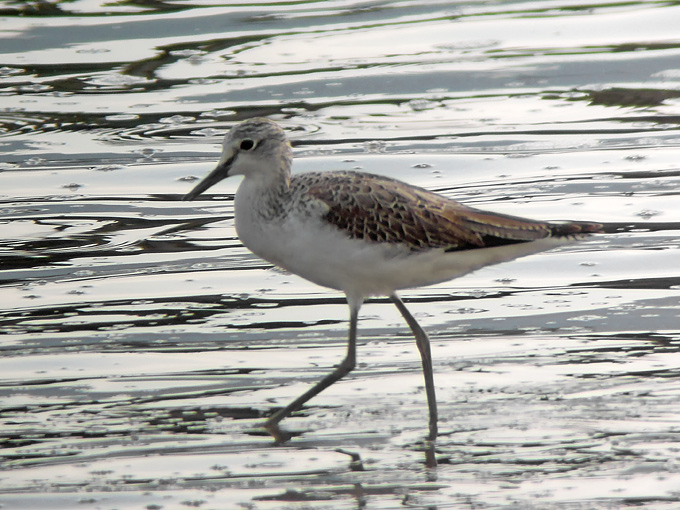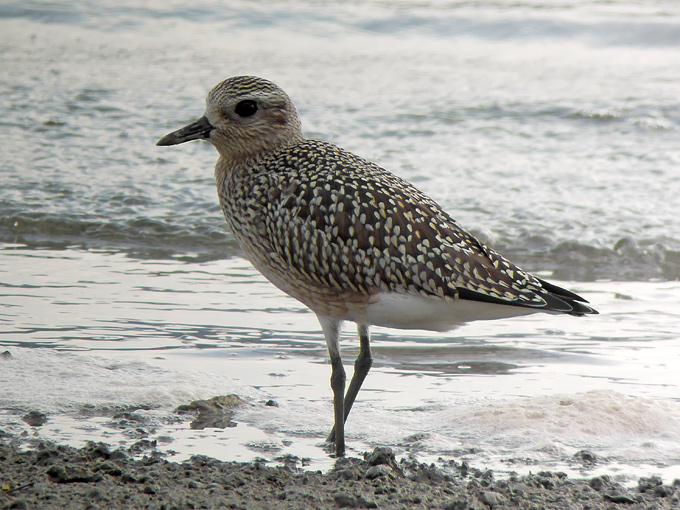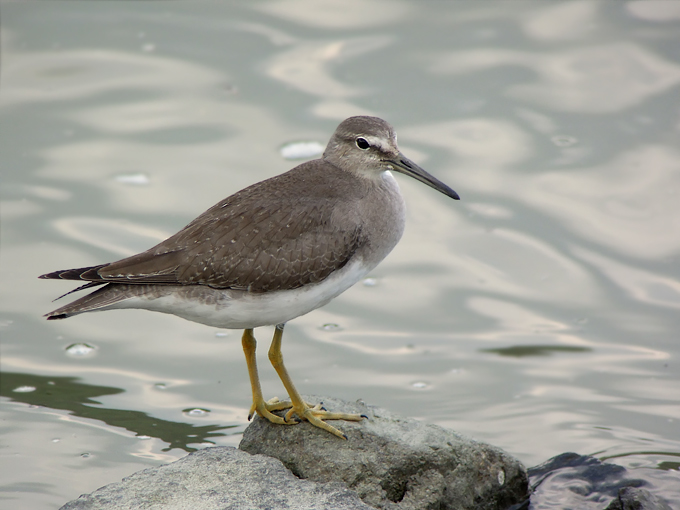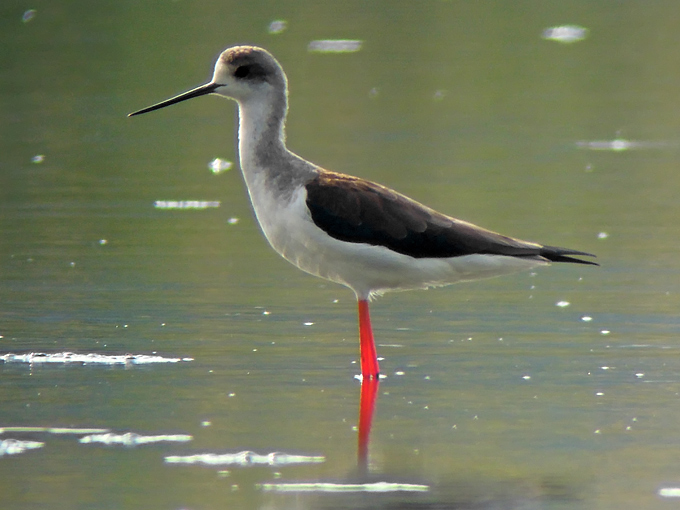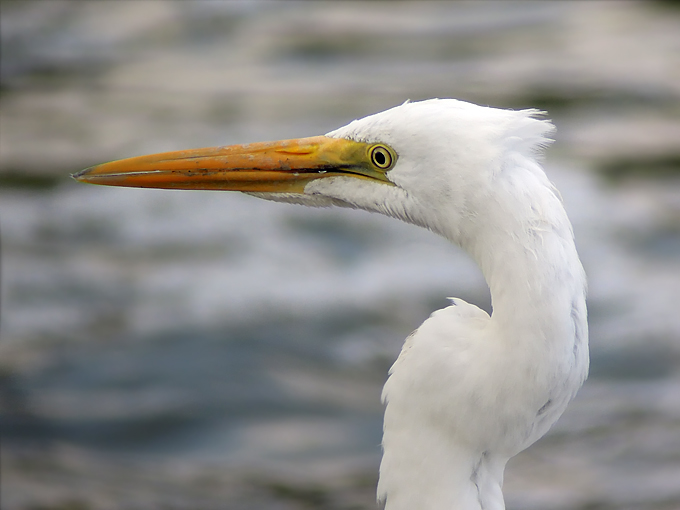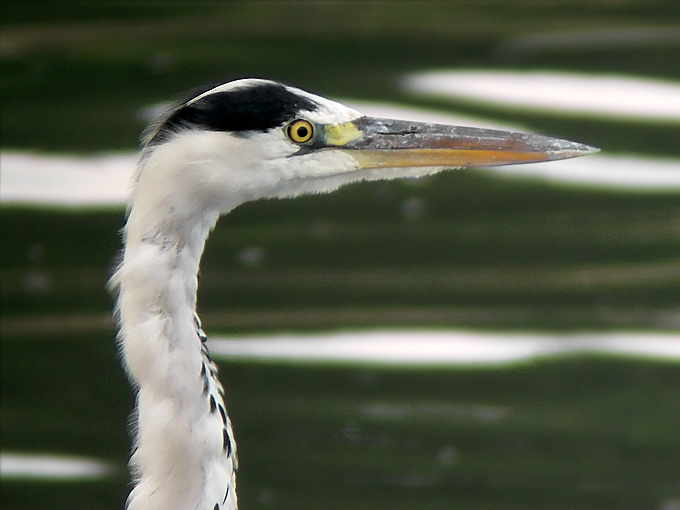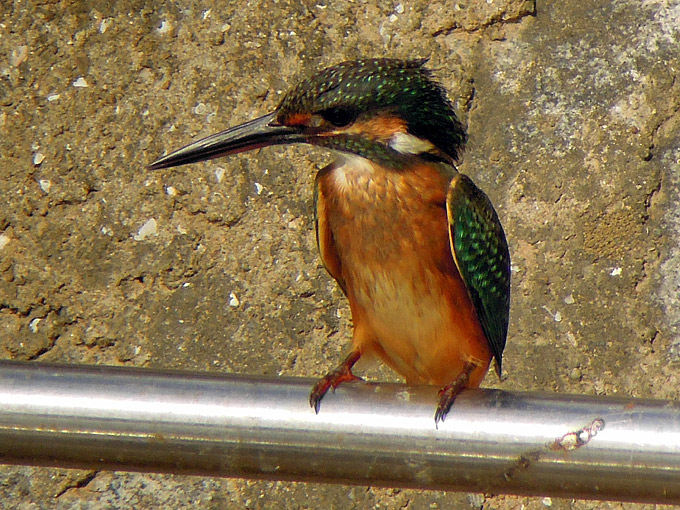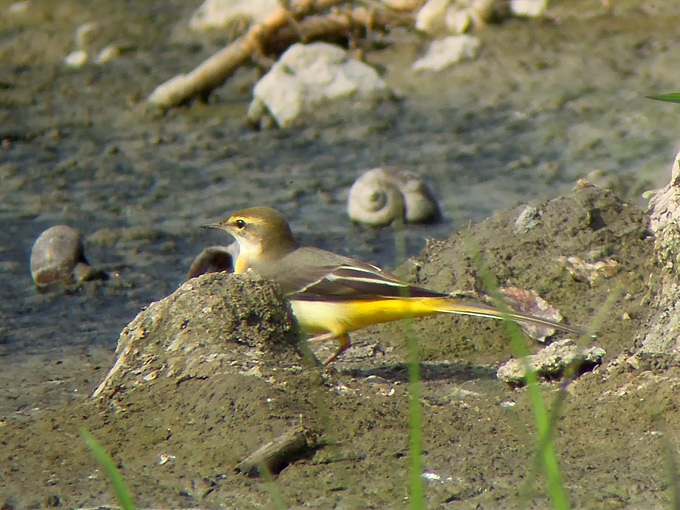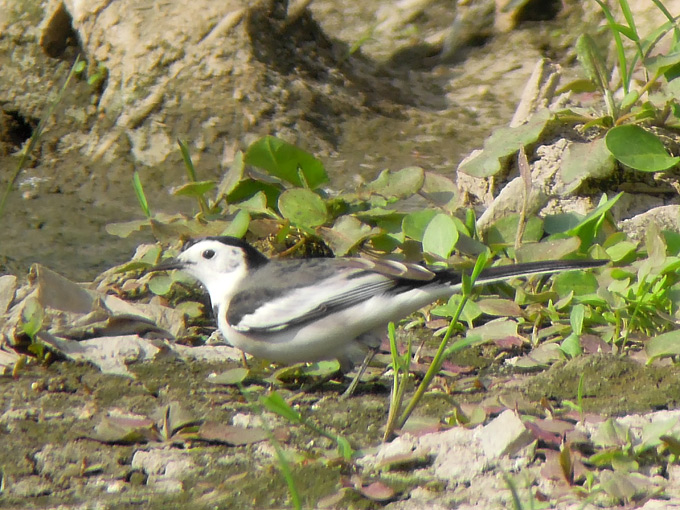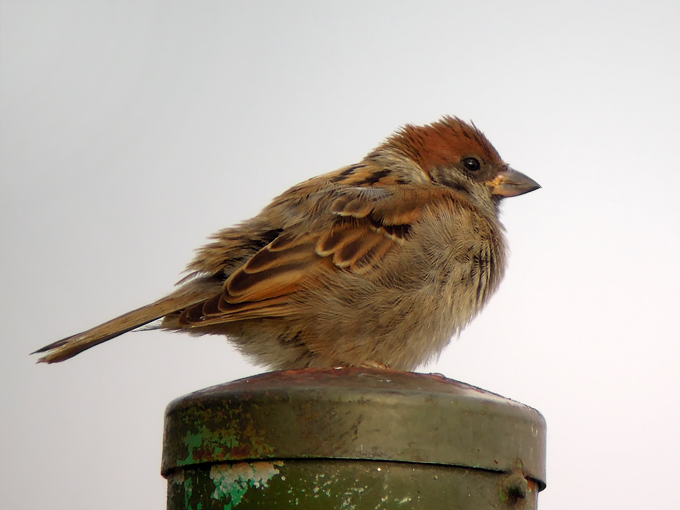 | E-mail to Birds Korea |
 | KWBS |
in the Region
 | The Oriental Bird Club |
 | BirdLife International (Asia) |
October
Warm (typically between 15-20°C mid-month), with often excellent birding weather: dry, sunny, and relatively calm. Occasional rain, although uncomfortable for birdwatchers, can produce excellent falls. One of the best times to be birding in Korea! Autumn migration is in full swing, and anything is possible.
Black-faced Spoonbill and Chinese Egret are still reasonably widespread. Hooded and White-naped Cranes start moving back south into the ROK and huge concentrations of Tundra Beans and Greater White-fronted Geese form in Cheorwon, at the Han-Imjin and Seosan. Raptor migration is often strong, with Grey-faced Buzzards (day peak of 1,650 on Gageo Island), Crested Honey Buzzards, the occasional eagle (especially Greater Spotted), and in some years, flocks of Amur Falcon, especially in the northwest. Shorebirds are still present in good numbers and diversity, with a peak in Nordmann’s Greenshank. Visible passerine migration also peaks with Olive-backed Pipits becoming numerous by mid-month along the west coast, plus often excellent numbers of buntings and flycatchers. Pale, White’s, and small numbers of Dusky Thrushes are also on the move, along with the first of the typical winter passerines - Brambling and Siskin.
In 2005 the country’s first Swinhoe’s Rail in 70 years was reported from Hong Island, while Korean firsts in October have included Scaly-breasted Munia (2003), Yellow-bellied Tit (2005), Booted Eagle (2006) and Pine Grosbeak (2013).
Geomun Island, October 24 - 27
I visited Geomundo from 24-27 October. Weather was warm and calm on all but the last day, which was quite windy, cold. The ferry from Yeosu is a fast-ferry with little opportunity for birdwatching. There is plenty of forest habitat and good raptor migration over the ridge.
- Great Egret Ardea alba, 11 migrating S on 25th
- Eurasian Sparrowhawk Accipiter nisus, 1 on 25th, 6 on 26th
- Northern Goshawk Accipiter gentilis, 2 on 26th
- Black Wood Pigeon Columba janthina, 2 on 26th
- Great-spotted Woodpecker Dendrocopos major, 1 on 25th, 2 on 26th, 1 on 27th
- Amur Falcon Falco amurensis, 11 on 26th between 10:00 and 11:20 (3 + 5 + 3)
- Eurasian Hobby Falco subbuteo, 4 on 26th
- Barn Swallow Hirundo rustica, 30 on 25th, flying south
- Japanese Bush Warbler Horornis diphone, common, found every day in suitable habitat
- Asian Stubtail Urosphena squameiceps, 1 on 26th.
- Far Eastern Cisticola Cisticola juncidis, 1 on 26th.
- Goldcrest Regulus regulus, 1 on 27th.
- White’s Thrush Zoothera aurea, 1 on 26th.
- Pale Thrush Turdus pallidus, seems quite common, but exceedingly difficult to get a view. Only seen flying from behind on 25, 26, and 27th.
- Red-flanked Bluetail Tarsiger cyanurus, 1 on 25th.
- Brambling Coelebs montifringilla, 1 on 25th, 7 on 27th.
- Common Rosefinch Carpodacus erythrinus, 1 on 26th.
- Rustic Bunting Emberiza rustica, 1 on 24th, 1 on 26th.
- Yellow-throated Bunting Emberiza elegans, 1 on 25th, 6 on 26th.

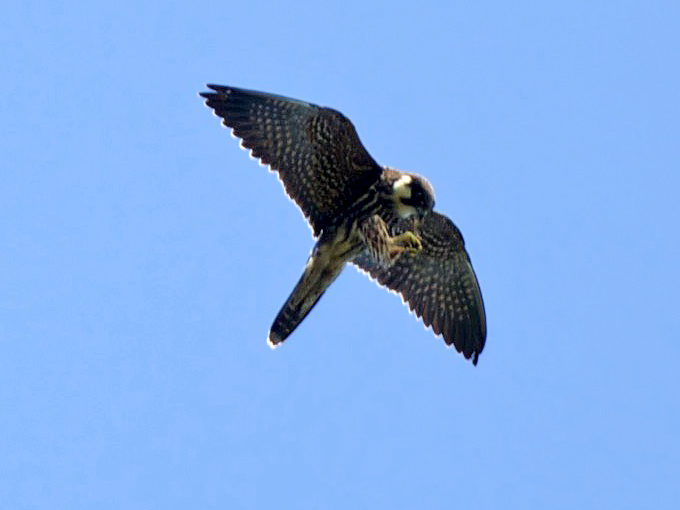
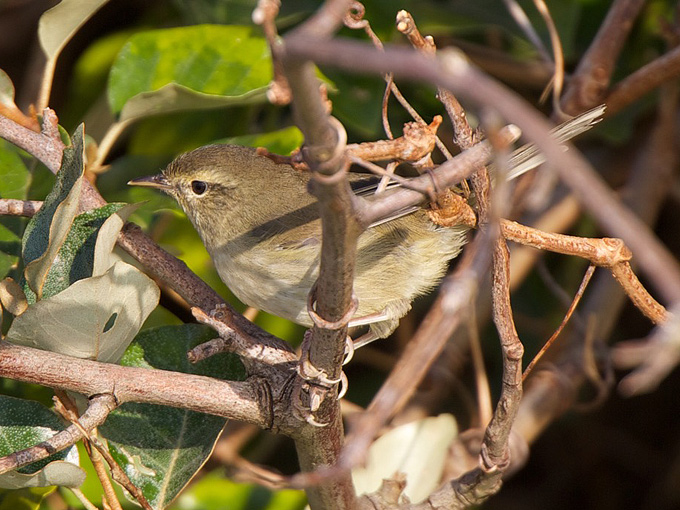
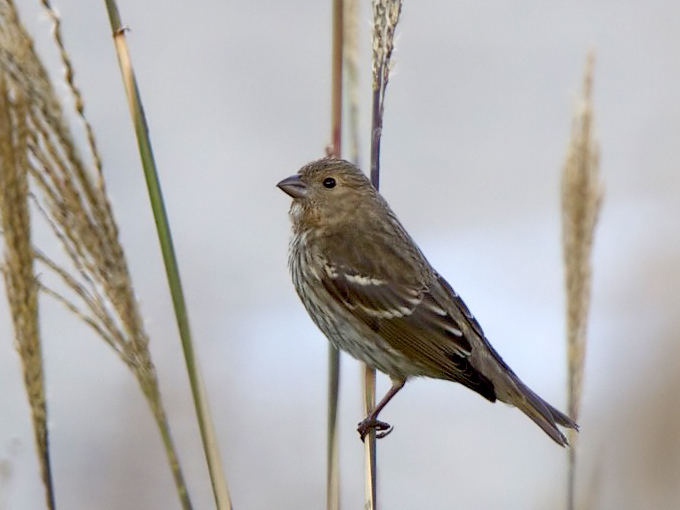
Gageo Island, October 25 - 26
A quick weekend trip to Gageo over calm seas. List of selected birds observed.
- Pomarine Skua - At least 4 skuas observed from the boat from Mokpo .... one of them being close enough to be definitely identified as a Pomarine.
- Long-tailed Shrike - At least 3 birds present in 1-gu.
- Black Drongo - Seen briefly in flight near the garbage dump. A species that is quite rare in fall.
- White-backed Woodpecker - A single bird well observed near the garbage dump.
- Light-vented Bulbul - There are now large flocks of this species consisting of at least 20~30 birds.
- Common Starling - At least 3 birds seen in flight on multiple occasions.
- Styan's Grasshopper Warbler - A single individual poorly seen at the base of the quarry.
- Chestnut Bunting - 2 individuals observed in the terraced fields on the way to the main village down from the quarry.
Ulleung Island and Dongdo (Dokdo), October 20 - 25
This was a short research trip to the heavily-forested, mountainous and isolated Ulleung Island, aiming to improve understanding of migration strategies, both across the East Sea and also across-island. Unfortunately only 2.5 days could be spent in the field. Much of October 20th was spent travelling and only two hours could be spent surveying in Taewa. On 21st, heavy rain, persistent through until the early afternoon, and strong northeasterly winds (apparently leaving the Asian mainland near Vladivostok) restricted fieldwork to only 3 hours at Hyeonpo. More or less full days were then spent in the field on 22nd and especially on the 23rd, with Nari, Cheonbu, Hyeonpo and Taewa surveyed in sunny conditions with light winds on the latter date. Other work commitments meant no fieldwork was conducted on the 24th; and the 25th was comprised only of 8 hours of boat trips and 20-30 minutes in the field on Dongdo in Dokdo (instead of the anticipated 2-3 hours) under clear skies and Force 2-3 westerlies.


In total, only 82-84 species were logged, remarkably with no phylloscopus warblers or flycatchers encountered, and only small numbers of buntings found. Brambling and Eurasian Siskin were the only numerous landbirds. As in 2013, many thanks to the M Motel in Dodong for their kindness and to authorities for permission to visit Dongdo, “Where morning in Korea starts.” A full list follows (all bird images digiscoped with a handheld Sony RX 100 II camera through a truly superb Swaorvski Optik scope):


- Greater White-fronted Goose Anser albifrons. One at Hyeonpo on 23rd.
- Mandarin Duck Aix galericulata. Probably 120 on the sea off the sheltered southern side of Ulleung on the 21st and 22nd, with only eight there on the 23rd (once winds had lightened) when also c.15 in various stages of moult at Taewa.
- Eurasian Wigeon Anas penelope. One at Nari and two at Taewa on the 23rd.
- Mallard Anas platyrhynchos. Six at Taewa on the 20th; five in various harbours on the 21st and 22nd; and five in Taewa on the 23rd.
- Eastern Spot-billed Duck Anas zonorhyncha. At Taewa, four on the 20th; three on the 22nd and two on the 23rd.
- Northern Pintail Anas acuta. One at Taewa on the 23rd.
- Baikal Teal Anas formosa. One male with Mandarins on the sea on the 22nd.
- Eurasian Teal Anas crecca. Five to ten each day in the field.
- Common Pochard Aythya ferina. One at Taewa on the 20th and two there on the 23rd.
- American Scoter Melanitta americana. One at Hyeonpo on the 21st and 22nd.
- Red-breasted Merganser Mergus serrator. Singles on the 20th and 23rd.
- Common Pheasant Phasianus colchicus. Widespread and numerous, with e.g. probably 75 seen on the 23rd.
- Streaked Shearwater Calonectris leucomelas. A total of 35 seen from the ferry between Pohang and Ulleung on the 20tt, with four seen in an hour of observation on the 25th on the way back to Pohang. From Ulleung, 70 seen off Taewa on the 20th; three seen off Dodong on the 21st; five off Hyeonpo on the 22nd; none seen on 23rd; and only five seen between Ulleung and Dokdo on the 25th.
- Little Grebe Tachybaptus ruficollis. One in Taewa on the 23rd.
- Grey Heron Ardea cinerea. Each day, 2-4 along the coast.
- Western Great Egret Ardea alba alba. Four on the 21st; 19 at Namyang on the 22nd; and one at Hyeonpo on the 23rd.
- Temminck’s Cormorant Phalacrocorax capillatus. Seen in small numbers each day, with 45 off Hyeonpo on the 21st and ten on Dokdo on the 25th the highest counts.
- Western Osprey Pandion haliaetus. One at Hyeonpo on the 21st.
- Japanese Sparrowhawk Accipiter gularis. At least two on the 22nd and five on the 23rd (including two calling).
- Eurasian Sparrowhawk Accipiter nisus. The most regularly-encountered raptor, with three on 22nd; at least three on the 23rd; and on 25th, two over Sadong Harbour, one at sea about 10km east off Ulleung and at least three (and possibly up to five) on Dokdo.
- Northern Goshawk Accipiter gentilis. One on 21st.
- Eurasian Coot Fulica atra. On 20th, three probables at sea about 30km from Pohang, one definite about 10km off Ulleung and one at Taewa. A flock of about 20 birds on the sea seen very briefly and poorly from a moving bus on the 21st were also thought likely to be this species.
- Common Snipe Gallinago gallinago. Two at Taewa on the 23rd.
- Common Sandpiper Actitis hypoleucos. One at Taewa on the 23rd.
- Dunlin Calidris alpina. One at Taewa on the 23rd.
- Black-tailed Gull Larus crassirostris. Seen each day of fieldwork, with (only) 13 in open sea between Pohang and Ulleung and c. 1,000 along the coast on Ulleung on 20th; probably 1,500 on the 21st; 1,000 on 22nd; >1,000 on 23rd; and 150 around Dokdo, with 3-5 at sea between Ulleung and there, on the 25th.
- Vega Gull Larus vegae. Five on 20th; 20 on 21st; 30 on 22nd; and 100 on the 23rd, including one presumed birulai (round-headed, pale-mantled, yellow-legged, and like all the vegae, with not-yet started / incomplete primary moult.
- Mongolian Gull Larus mongolicus. One on the 23rd.
- Slaty-backed Gull Larus schistisagus. Three on 21st and 10+ on 22nd.
- Taimyr Gull Larus heuglini taimyrensis. Two on 22nd.
- Common Tern Sterna hirundo. At least 58 from the ferry off the Guryongpo Peninsula on the 20th.
- Black Wood Pigeon Columba janthina. Small numbers seen each day on Ulleung, including on one or more dates in Dodong (single birds); above Dodong (single birds); near Sadong (single birds); south of Taewa (two); in Taewa (3-5); above and in Hyeonpo (2-3); in Cheonbu (single birds); along the road between Cheonbu and Nari (c. 5); and in the Nari basin (2+). Considering this species’ secrecy; high density in good habitat on other islands; potential available habitat; and the limited time spent in the field / limited area covered, it seems likely that the Ulleung population could be as many as 200-500+ individuals (?). If anyone reading this knows of any published survey reports and population estimates for this Ulleung population of Black Wood Pigeon, could you please let us know? Thank you.
- Oriental Turtle Dove Streptopelia orientalis. One seen at sea halfway between Pohang and Ulleung on the 20th; 5-20 seen each day on Ulleung; and two seen on Dokdo, in very limited coverage of that island.
- White-backed Woodpecker Dendrocopos leucotos takahasii. Four were seen in deciduous and mixed woodland along c. 1.5km of road between the Nari basin and Cheonbu on 23rd. Overall impressions of this Ulleung-endemic subspecies include: apparently smaller-billed than nominate (with less intense and persistent pecking heard); less heavily streaked below; and probably less white on the upperparts, with also a perhaps more obviously red vent.
- Great Spotted Woodpecker Dendrocopos major. One was seen well in Hyeonpo on 23rd: presumably a migrant but from where? Ulleung is about 130km east off the Korean coast; almost twice that distance from the nearest Japanese islands (to the southeast); and c.615km SSW from Vladivostok.
- Common Kestrel Falco tinnunculus. Singles on 22nd and 23rd.
- Peregrine Falcon Falco peregrinus. Between two and three seen (most dates) on Ulleung and at least one on Dokdo.
- Bull-headed Shrike Lanius bucephalus. Five or six on 23rd.
- Rook Corvus frugilegus. One on the 21st in Hyeonpo; and six in Nari on the 22nd increasing to nine on 23rd, when watched departing to the SE.
- Large-billed Crow Corvus macrorhynchos. One (subspecies unknown, but perhaps mandschuricus?) on Dodko on the 25th.
- Coal Tit Periparus ater. Two on 21st, one on 22nd, and 10+ on 23rd.
- Varied Tit Sittiparus varius. Common and widespread on Ulleung, with e.g. 75-100 encountered on 23rd. All that were seen well showed the same suffused and sullied look to the upperparts noted in the species here in November 2013 (noticeably different to birds seen on the mainland in recent weeks).
- Eastern Great Tit Parus minor. Locally common, with up to 50 encountered on 23rd. As noted in 2013, birds here seem to have a slightly different vocal dialect to birds on the mainland (frequently using a Marsh Tit like “tut” call), but otherwise few (if any) obvious plumage differences. Although Ulleung birds are afforded full subspecific status (dageletensis), a comparative study on Eastern Great Tits in Korea by Huh et al. (2009), published in the Korean Journal of Ornithology, found no obvious differences in external characters in birds on Ulleung with birds from other parts of the ROK. However, the paper’s abstract mentions slightly greater tarsus length and total length, and occasional birds in November 2013 especially showed a more obvious yellowish flush to the underparts than is typical of even young Eastern Great Tit on the mainland. It could be argued that these features support the hypothesis that the population on Ulleung might have been influenced by the occasional/ extremely rare arrival of irruptive Northern Great Tits, resulting over time in the expression of diluted hybrid characters.
- Eurasian Skylark Alauda arvensis. One at Hyeonpo on 21st; and two at Nari on 22nd, increasing to seven or eight on 23rd.
- Brown-eared Bulbul Hypsipetes amaurotis. Encountered in small numbers daily on Ulleung with a maximum 25 on 23rd. One was also heard on Dodko on 25th.
- Japanese Bush Warbler Horornis diphone. One was heard near Cheonbu on 23rd.
- Long-tailed Tit Aegithalos caudatus. At least five (of unknown subspecies) were heard but not seen in spite of much searching on 23rd.
- Middendorff’s Grasshopper Warbler Locustella ochotensis. A locustella seen in very inclement conditions in Hyeonpo on 21st was most likely this species.
- Japanese White-eye Zosterops japonicus. On 23rd, 15-20 were heard (none seen) in woodland between Nari and Cheonbu. Based on calls, all seemed most likely to be japonicus (though one small rapidly-moving flock sounded at distance closer to Chestnut-flanked than to Japanese White-eye).
- Goldcrest Regulus regulus. First noted on 23rd, when three were heard. Two or three were on Dodko on 25th.
- Eurasian Wren Troglodytes troglodytes. Between one and six were heard each day on Ulleung.
- White-cheeked Starling Spodiopsar cineraceus. Three on 22nd; 23 in Hyeonpo on 23rd; and c.15 on Dokdo on 25th.
- Common Starling Sturnus vulgaris. Seven were in Hyeonpo on 22nd (but were not seen on 23rd, despite searching the same area).
- Grey Thrush Turdus cardis. Two were seen well from the road between Nari and Cheonbu on 23rd and one was on Dokdo on 25th.
- Eye-browed Thrush Turdus obscurus. One rather odd-looking individual was seen on Dodko on 25th (apart from the face pattern, its plumage looked remarkably like Brown-headed Thrush).
- Pale Thrush Turdus pallidus. Presumably massively overlooked, as birds appeared to be absent until you actually enter forest – which covers most of Ulleung. One was seen on 21st; two on 22nd; 45+ on 24th (including one flock of 35); and on 25th, one was heard coming in off the sea before sunrise, and 1-2 were on Dokdo.
- Dusky Thrush Turdus eunomus. On 22nd, 10-15 were at Nari, with 30+ seen there on 23rd (with one flock containing at least one probable Naumann’s Thrush). One was on Dokdo on 25th.
- Bluethroat Luscinia svecica. One was in Hyeonpo on 22nd.
- Red-flanked Bluetail Tarsiger cyanurus. One on 22nd and two on 23rd.
- Daurian Redstart Phoenicurus auroreus. Present in small numbers daily, with at least 20 on 23rd the highest day count. One was on Dokdo on 25th.
- Blue Rock Thrush Monticola solitarius. Present in small numbers daily, with 6+ on 23rd the highest day count.
- Stejneger’s Stonechat Saxicola stejnegeri. Present in small numbers daily, with one on 20th; six in Hyeonpo on 21st; 20 on 22nd; 30 on 23rd; and at least two on Dokdo on 25th.
- Russet Sparrow Passer rutilans. Although believed to be a summer visitor to Ulleung, still fairly widespread, with many birds that were seen well appearing perhaps to be birds of the year (?). At least 50 were in Nari on the 22nd, with one in Hyeonpo and two in Cheonbu. On 23rd, 30+ were seen in the small part of the Nari basin that was surveyed; 2+ were in Cheonbu and 20 were in Taewa.
- Grey Wagtail Motacilla cinerea. Two or three were in the stream at Taewa on 20th and 23rd.
- White Wagtail Motacilla alba. Two on 22nd, and five (all lugens) on 23rd. One lugens was on Dokdo on 25th.
- Olive-backed Pipit Anthus hodgsoni. Present daily on Ulleung in very small numbers (1-5).
- Red-throated Pipit Anthus cervinus. Two in Hyeonpo on 21st; five on 22nd; and 4+ on 23rd.
- Buff-bellied Pipit Anthus rubescens. Present in small numbers daily, with e.g. 60 on 22nd and 45+ on 23rd the highest counts. At least 2-3 were on Dokdo on 25th.
- Brambling Coelebs montifringilla. Large numbers arrived during the survey period. None were logged on the 20th; 30 were in Hyeonpo on 21st; a conservative 800-1,000 were counted on 22nd; and 850+ were counted on 23rd, with some flocks seen to gain height and cross the mountain ridge to the southwest on 23rd. On 25th, 300-400 were seen at dawn in Sadong harbor, and 100+ were on Dodko.
- Hawfinch Coccothraustes coccothraustes. Two were in Nari on 22nd and one was seen there on 23rd.
- Chinese Grosbeak Eophona migratoria. Five were in Nari on 23rd.
- Eurasian Bullfinch. Pyrrhula pyrrhulawas heard in Nari on 22nd and 1-2 were heard along the Nari-Cheonbu road on 23rd.
- Grey-capped Greenfinch Chloris sinica. Small numbers (5-10) were seen each day on Ulleung and 2+ were on Dokdo on 25th.
- Common Redpoll Acanthis flammea. At least 5-8 were in Nari on 22nd and 10+ were seen in flight there on 23rd. On Dokdo, four were seen (and very poorly digiscoped) on Dokdo on 25th.
- Arctic Redpoll Acanthis hornemanni. Two probables were seen in Nari on 22nd, both only in flight so views were inadequate to confirm identification. Both appeared strikingly pale (much more so than the still-pale flammea Commons), in flight showing clean-looking vents, broad white-looking rump bands and extensive white on the wings. One gave a series of calls that sounded slower and softer, less nasal than the other redpolls; and one of these pale birds also looked obviously larger than a (presumed) Common Redpoll in direct comparison.
- Red Crossbill Loxia curvirostra. On 23rd, two calling birds, mixed in a flock of 50 similar-sized high-flying finches, were certainly this species.
- Eurasian Siskin Spinus spinus. A large arrival took place on the 21st, with 560 counted moving across a high pass above Hyeonpo in only 30 minutes, with smaller flocks seen along the coastal road from the moving bus. Many of these departed the island or perhaps more likely disappeared into dense forest in the interior of the island, with only 150 counted on 22nd and 100 on 23rd. On 25th, 50+ were seen behind Sadong harbor at dawn, and 50-75 were on Dokdo.
- Pine Bunting Emberiza leucocephalos. One heard in Hyeonpo on 21st and two heard in Nari on 22nd.
- Chestnut-eared Bunting Emberiza fucata. One was in Nari on 22nd and 23rd.
- Rustic Bunting Emberiza rustica. Not numerous, but still the only “common” bunting, with two in Taewa on 20th; 3+in Hyeongpo on 21st; and 50+ on 22nd and 23rd.
- Yellow-throated Bunting Emberiza elegans. Two or three on 21st; 5+ on 22nd and 23rd; and at least one on 25th on Dokdo.
- Black-faced Bunting Emberiza spodocephala. Remarkably scarce, with two heard on 22nd and one seen on 23rd (a First Calendar-year personata).
- Pallas’s Reed Bunting Emberiza pallasi. One or two in Nari on 22nd and one there on 23rd.

















Observations (from a few days in November in 2013 and this visit) suggest that in autumn many birds arrive in the northeast of the island, then move southwestward along the western flank of Naribong (with its peak of 816m) and across the Nari basin (caldera) and on southwestwards; with others continuing along the north coast (with its gentle ENE-WSW axis) on to Hyeonpo. Smaller numbers also appear to arrive and move south along the east coast, perhaps when they encounter westerly winds (=headwinds). The species mix, especially when compared with Yellow Sea islands, suggests that at least a few birds reach Ulleung from Japan. However, on the very limited survey effort to date, rather more of these migrants are likely coming from rather further north (perhaps the Russian coast near Vladivostok).
Haenam, October 25
I spent a nice afternoon birding around Gocheonnamho Lake in Haenam County with Peter Hirst. Waterfowl numbers were very low on the lake, with the most common species being Eurasian Wigeon (~300); Common Pochard, Northern Pintail, and Common Teal were also present in small numbers.
The highlight of the day was a Chinese Grey Shrike observed hunting over an expanse of rice field. Other good birds included Bull-headed Shrike (11), Common Kestrel (4), Eastern Buzzard (1), and a flyover of Grey-capped Greenfinch (20-25).
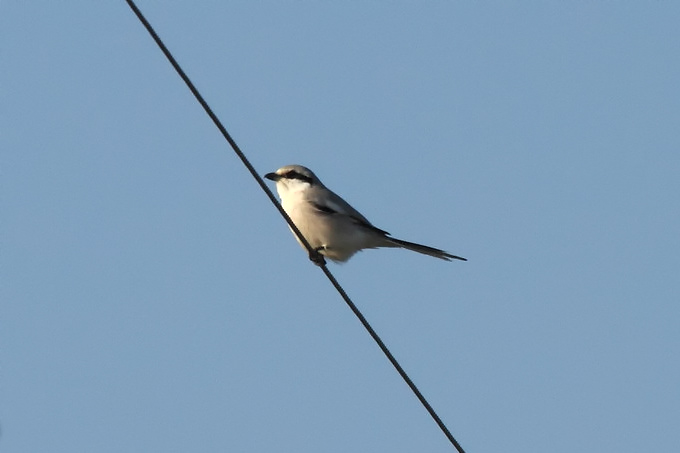
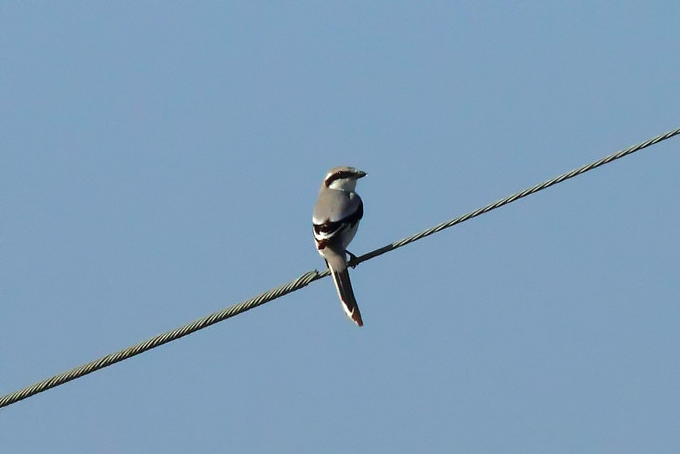
Eocheong Island, October 17 - 24
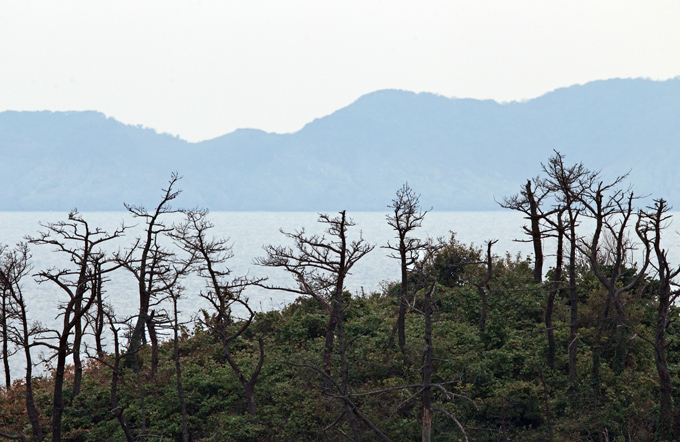
Friday 24th: Morning spent entirely in the boardwalk and eastern pathways area-Yellow-browed Warblers, Daurian Redstarts, Bramblings and Siskins continued, but in small and quiet numbers. The return boat trip was uneventful.
Finally, outside the Gunsan Train Station, a fare-thee-well mix of heard and/or seen birds: Azure-winged Magpies, Bull-headed Shrike, Yellow-browed Warbler, a Common Pheasant.
Thursday 23th: A Siskin flock, a few Black-faced Buntings, and some Bramblings at the quarry in the early morning, but overall a sense of few birds. At the boardwalk, however, a flash of blue and a jolt of excitement: a Verditer Flycatcher, working the sunlit bushes on the rocky slopes. At the reservoir some hours later: 2 Baikal Teal along with several Mandarin Ducks. Back at the boardwalk, no sign of the Verditer, but an Arctic Warbler calling, a few Yellow-browed Warblers, a Red-flanked Bluetail., and an Asian Brown Flycatcher.
Wednesday 22th: Rain ended, replaced by brisk northeasterly winds, and little evidence of any significant fall of birds. A single Japanese Reed Bunting and a small flock of Siskins at the quarry and Green Sandpiper at the reservoir. 2 Eurasian Sparrowhawks. Good conversation with the driver of an enormous bulldozer (!) on why there are so few swallows any more. Later, wind-sheltered, sunny spots on the leeward side of the island near the lighthouse yielded a Varied Tit, a Red-flanked Bluetail, a Taiga Flycatcher and 2 Goldcrests. Overhead, a Japanese Sparrowhawk. A small kettle of 4 Eastern Buzzards held one Upland Buzzard. A Goshawk bullied past. Back at the village, now two Northern Lapwings, a Eurasian Kingfisher and an Asian Brown Flycatcher.
Tuesday 21th: Rain, mostly heavy, all day. On occasional circuits: an Oriental Reed Warbler. Siskins and Bramblings apparent in small flocks, and c. 70 Barn Swallows. Scattered Black-faced Buntings, Yellow-throated Buntings and several Yellow Wagtails in evidence despite the downpour. A flock of 8 Mandarin Ducks winging over the harbor.
Monday 20th.: In morning intermittent light rain at the reservoir, some real excitement: a possible Jack Snipe. Précis of the main points: bird very briefly seen, flushed at very close range in good light, flying away from me. I did not get binoculars on it before it dropped over an embankment. The bird was tiny; size and structure seemed roughly like (and maybe smaller than) a Common Sandpiper. Flight was straight (arching smoothly up and then down), steady (e.g. no teetering, zigzagging, wandering), and quick. Overall the bird seemed dark: grey-toned and black-light lines (“braces”) on back (these seen very briefly), white trailing edge to secondaries, impression of white edges to sides of tail, (these last two points a millisecond longer). Tail appeared not wide and flared, snipe-style, but rather narrow and tapered: i.e., the proverbial “wedge shape.” I did not see any leg/feet protrusion. Wings did not appear as long or as pointed as a typical snipe. I saw the back of the head (roughly concolorous with back) but not the beak. Call was recognizably snipe-like, somewhat like a Common Snipe but very soft, quick and low, in a rapid four-syllable burst-2 short followed by two shorter notes in quick succession. The bird flew perhaps 50 yards up a heavily vegetated embankment but arced over a hedge of dense vines just before I could get the optics on target. I searched the area but much of the vegetation was impractically tall and dense. Several return walks about the pond verge were fruitless. The call “voice” sounded very similar to online recordings of single note Jack Snipe alarm calls, but I have not encountered a recording that duplicates the 4-note sequence I heard. I have no previous experience with the species, and repeat that the views I had were brief.
Later in the day, on and off in the on-and off rain: a very welcome Yellow-breasted Bunting. A few Yellow Wagtails. 2 Pallas’ Reed Buntings - one near the quarry and one near the minbak. A late-for-season Hobby appeared at dusk. On the east side of the island, suddenly a few moments of flocks of Bramblings flying in off the ocean and into the interior. A small flock of Siskins. Heard only at the same time: Bohemian Waxwings. On the beach as light faded, a Northern Lapwing.
Sunday 19th: A large snipe flushed in poor early morning light-no call to help with id. Little apparent wing pattern-perhaps a Swinhoe’s Snipe-but light was still poor. Later near the school, a small group of Chinese Grosbeaks. On the afternoon walk to the lighthouse, a tiny wetland produced a flushed crake-markedly large size, sense of powerful flight, coloration and glimpse of undertail coverts all suggest a Band-bellied Crake. Unfortunately, I did not see the head or beak. Over the hill, a small bird “band”-along with a few Yellow-browed Warblers, a single Pallas’ Leaf Warbler and a group of about seven Chestnut-flanked Whiteyes. A single chuckle from a thrush, probably a Dusky Thrush. Increasing cloud cover as the day wore on. Near the harbor in the evening, a single Pechora Pipit. Invisibly chekking from a shrub, an apparent Japanese Bush Warbler. With increasingly overcast skies, an influx of Barn Swallows: maybe 50 over the village.
Rain began in the early hours of the night.
Saturday 18th: A Watercock flushed and poorly seen in dense cover. Single Chestnut and Chestnut-eared Buntings. Near the minbak, a loudly peeping Chinese Penduline Tit. Circling the village, a White-fronted Goose. Heard, at times very briefly, Arctic and Two-barred Greenish Warblers. Four or so Bramblings.
Friday 17th: The boat trip was uneventful, relieved by a few Barn Swallows. On the island: a few more of these and 2 Red-rumped Swallows overhead. Birds seemed very scarce: one or two calling Yellow-browed Warblers, rather more but still few Rustic and Black-faced Buntings, single digits of Olive-backed and (heard) Buff-bellied and Richard’s Pipits. Also: 2 Peregrine Falcons, 2 Stenjeger’s Stonechats, a Chinese Sparrowhawk, a couple of Kestrels, an Eastern Buzzard, several Bull-headed Shrikes, invisibly calling Great Tits, ubiquitous Brown-eared Bulbuls, a hen Mandarin Duck on the reservoir, a few Grey Herons, 3 Little Grebes, and 2 Mallards. Above the quarry: an all-too brief glimpse of an apparent locustella, possibly a Middendorf’s Warbler. Nearby, 2 Far-eastern Skylarks, a Dusky Warbler, a Daurian Redstart, a few Blue Rock Thrushes and several Great Spotted Woodpeckers.
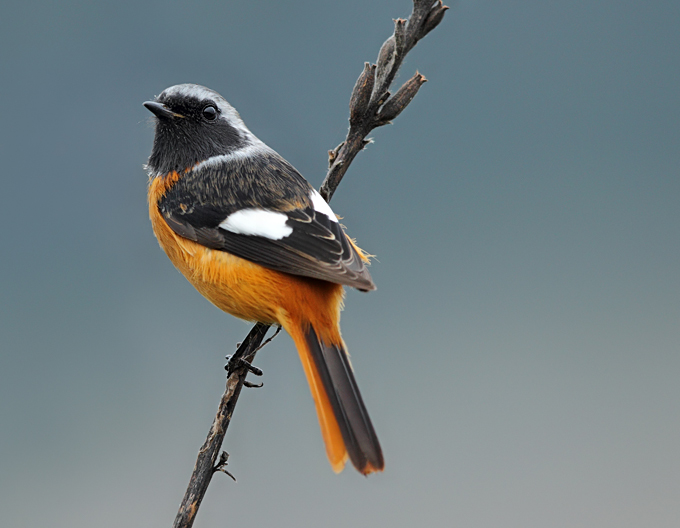
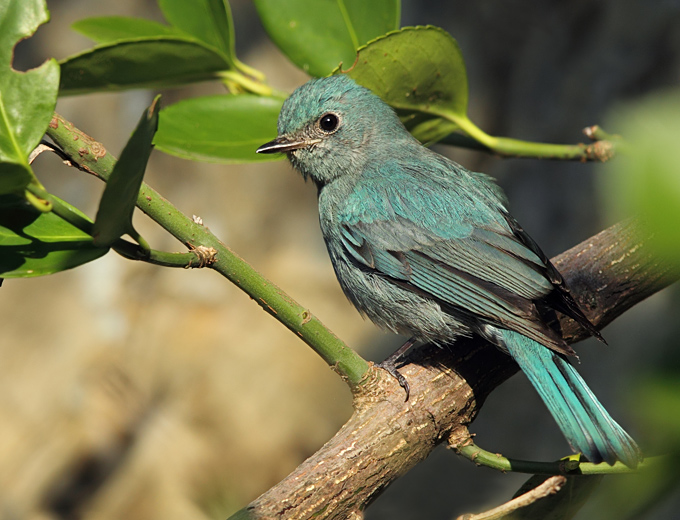
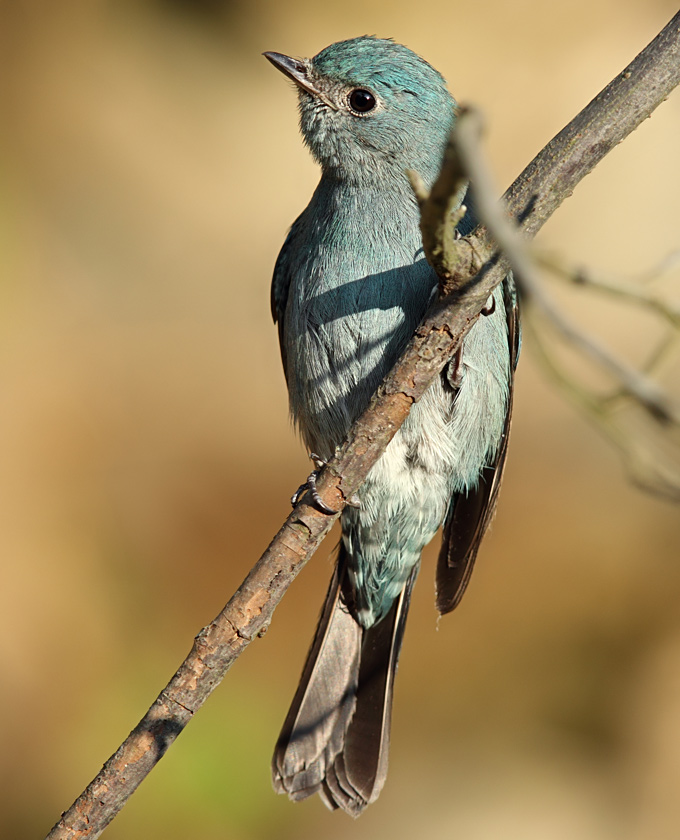

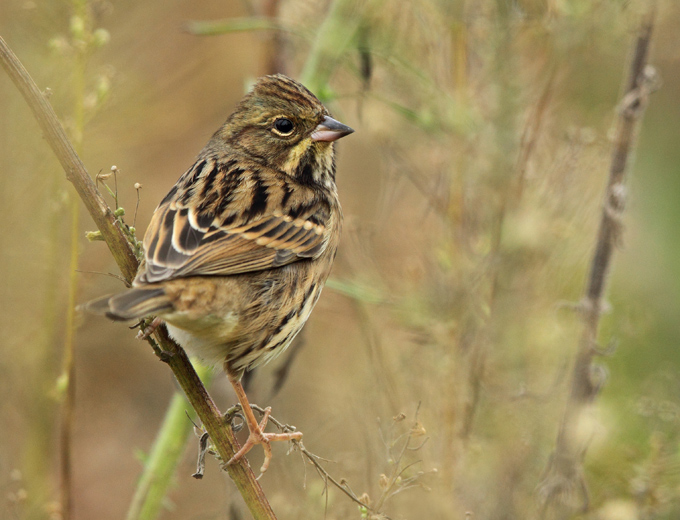
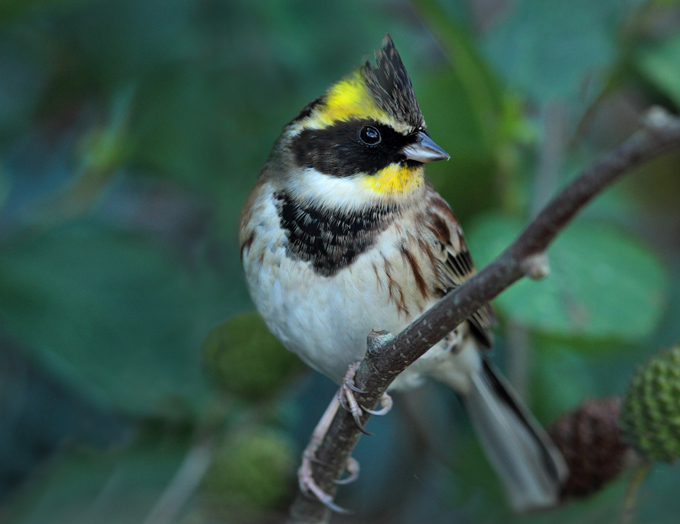
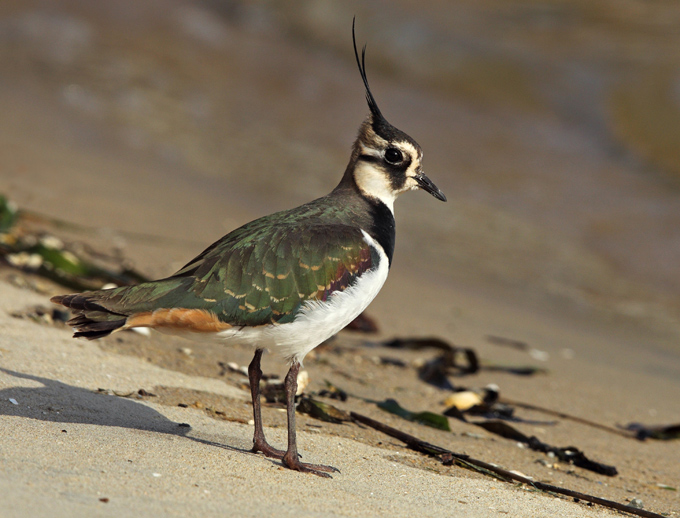


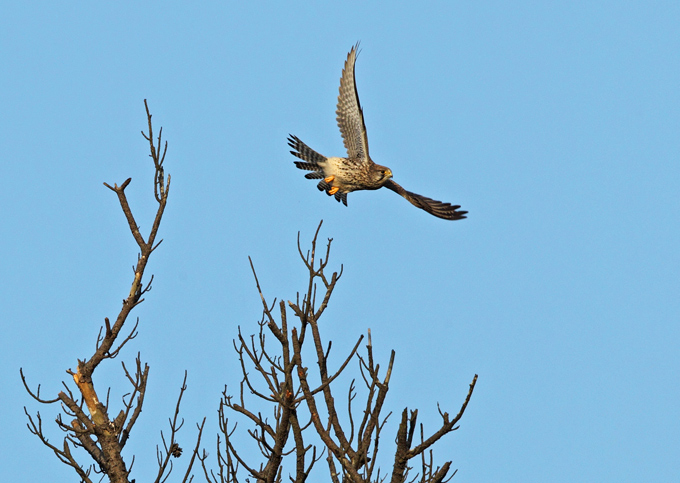
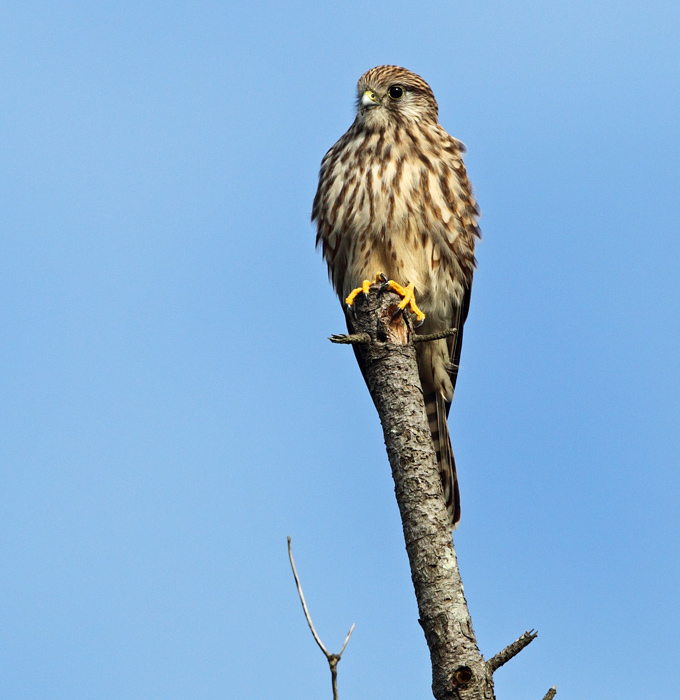
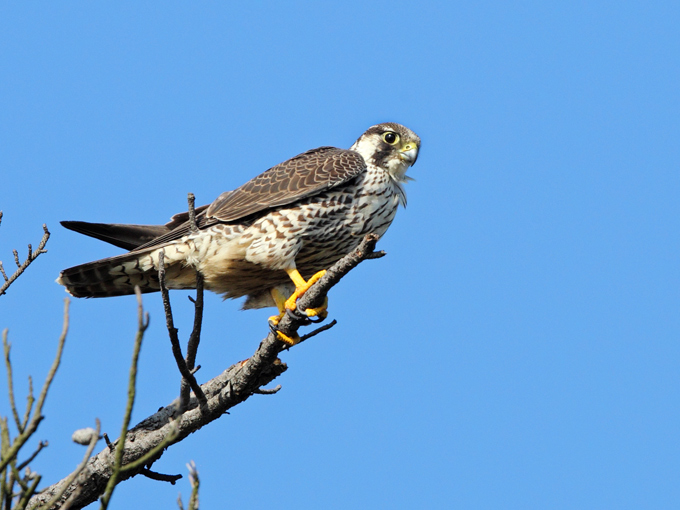
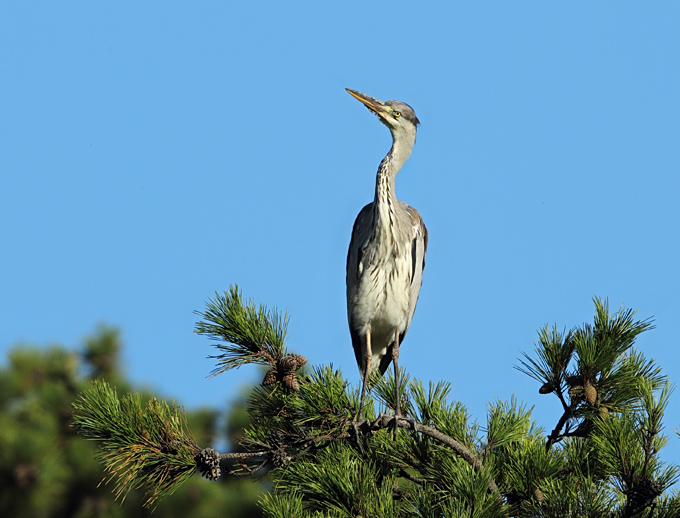
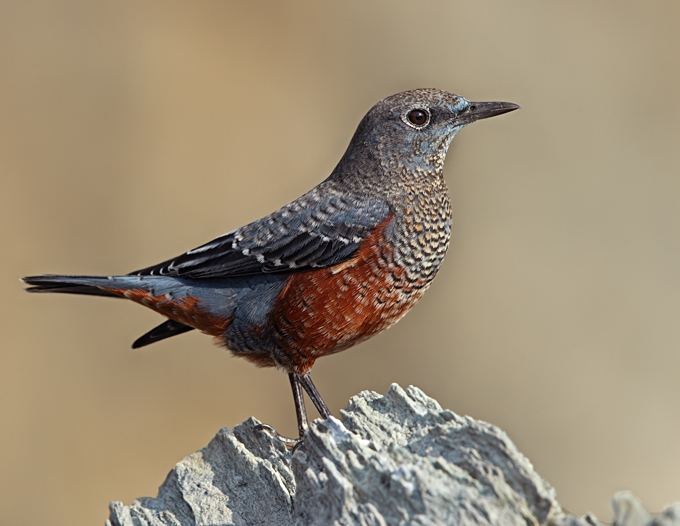
Mokpo Namhang Urban Wetland, October 23
The morning visit to the site show quite a variety of species. On shorebirds still c. 30 Common Greenshank, one Common Redshank, 11 Long-billed Plover, 11 Dunlin, two Common Sandpiper, one Terek Sandpiper and one Black-winged Stilt were seen.
Ducks get more numerous every week. Now c. 15 Northern Shoveler, c. 60 Common Teal, 20+ Eurasian Wigeon, c. 40 Eastern Spot-billed Duck, 10+ Mallard one in eclipse plumage.
Other birds seen were: one Great Egret, 3 Little Egret, 11 Black-tailed Gull all resting on poles, 20+ White Wagtail, 3 Grey Wagtail, small numbers of Eurasian Magpie, Eurasian Treesparrow, Grey-capped Greenfinch, Brown-eared Bulbul, Oriental Turtle Dove and also 3 Phylloscopus warbler which were very restless moving within several trees which made observation very difficult. From the few better views they most likely were Yellow-browed Warbler.

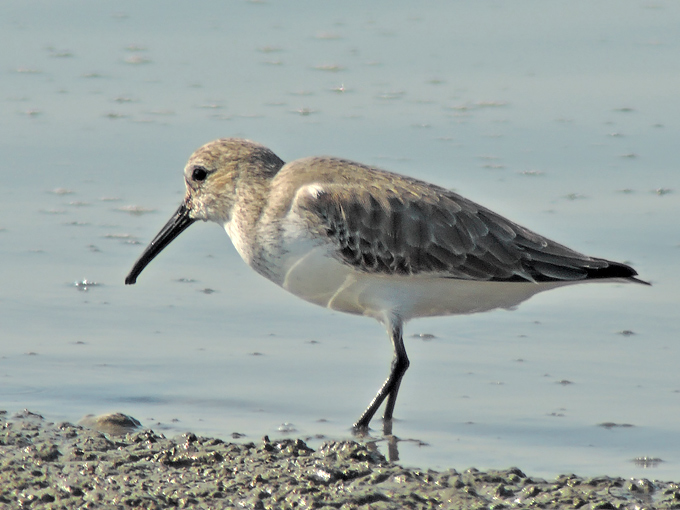
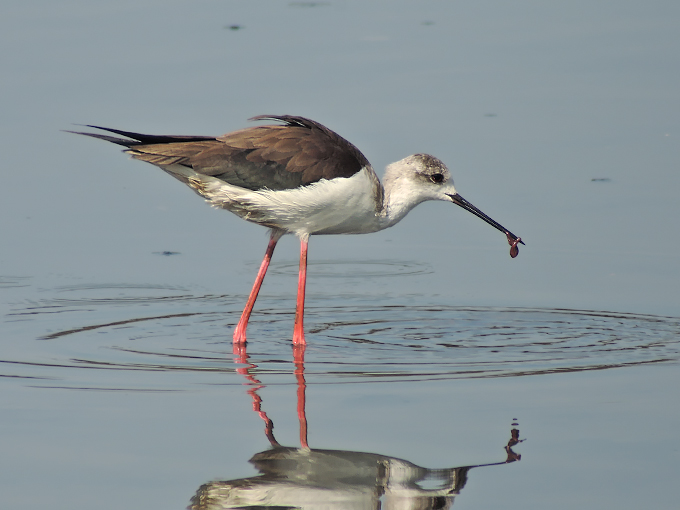
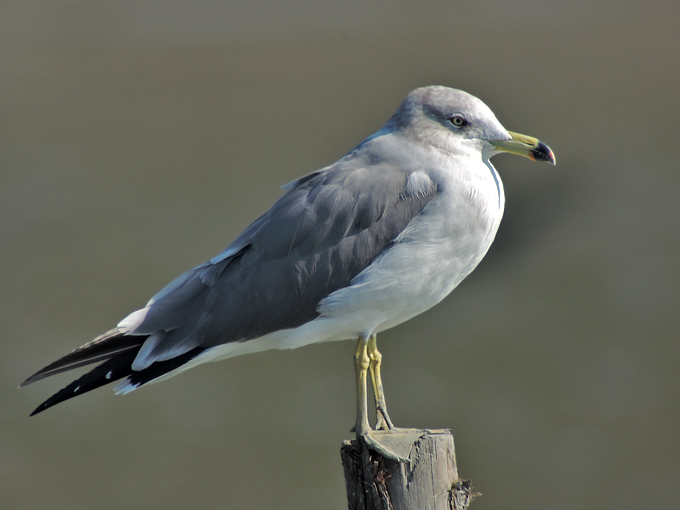
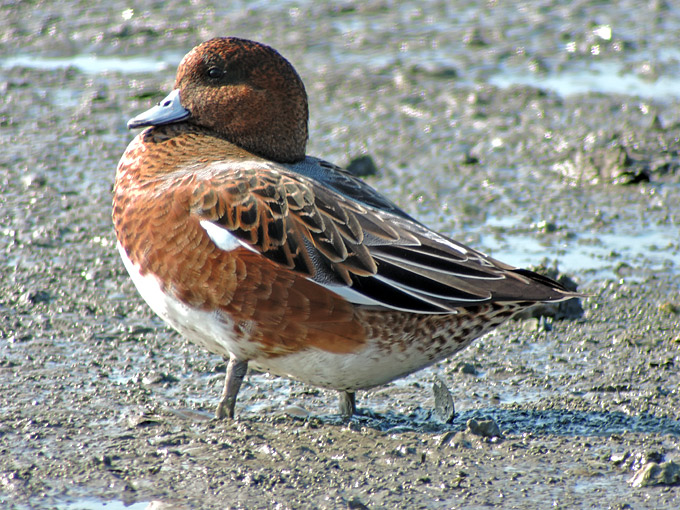
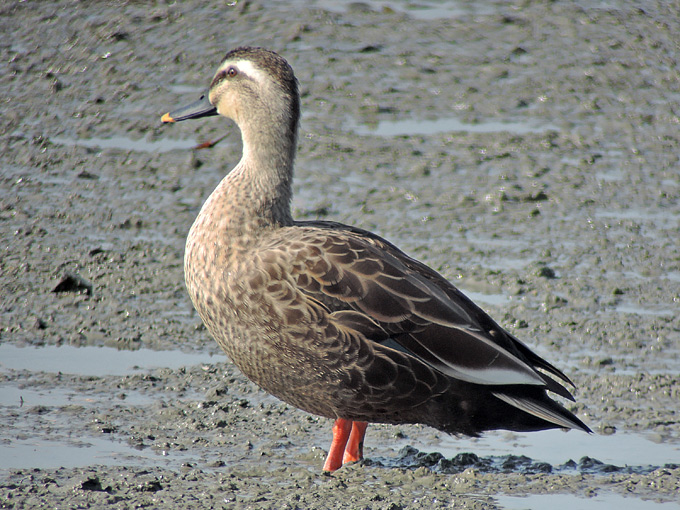

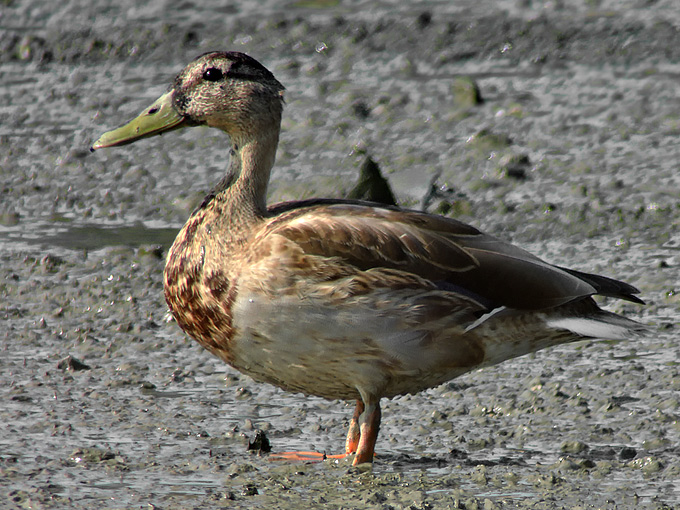
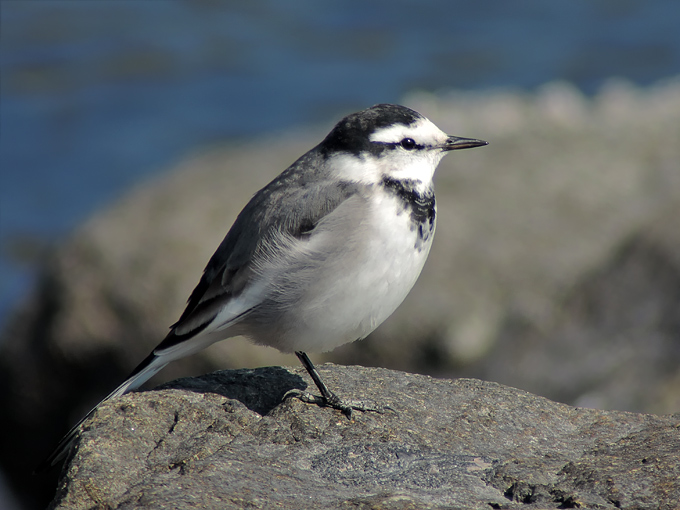
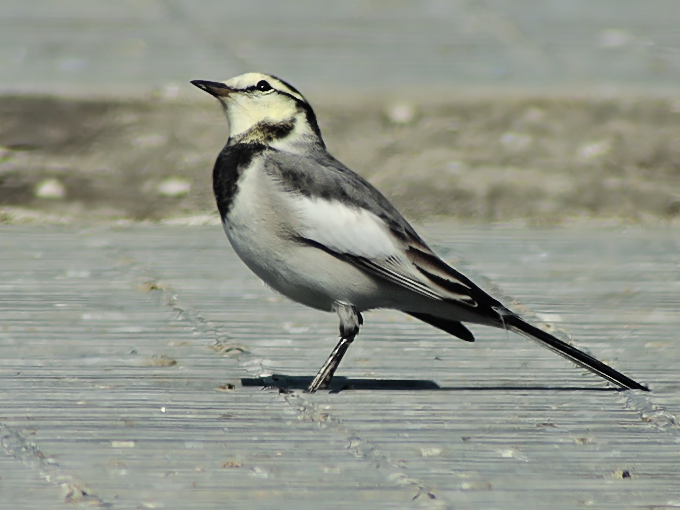
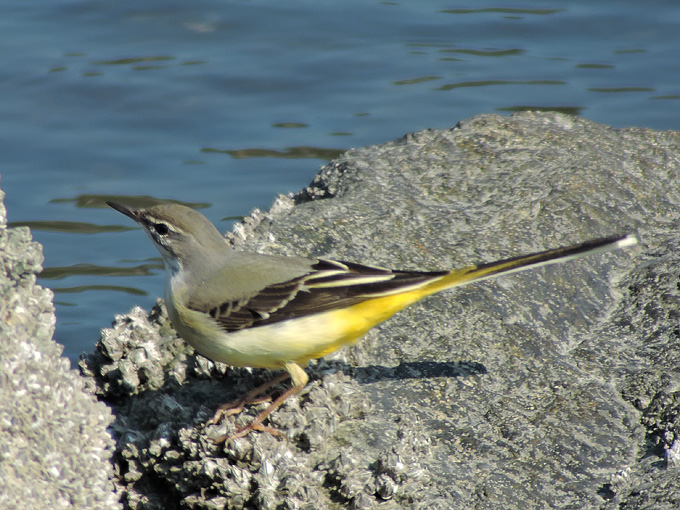
Mangyeung River, October 19
A Horned Lark, first found a week earlier, was photographed by local birder Lee Kwon-Woo on the 18th and then again by more birders on the 19th. This appears to be about the fifth record in the ROK of this species.
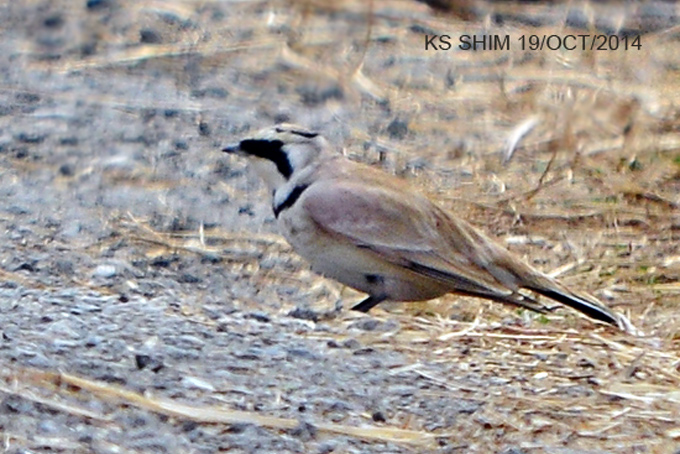
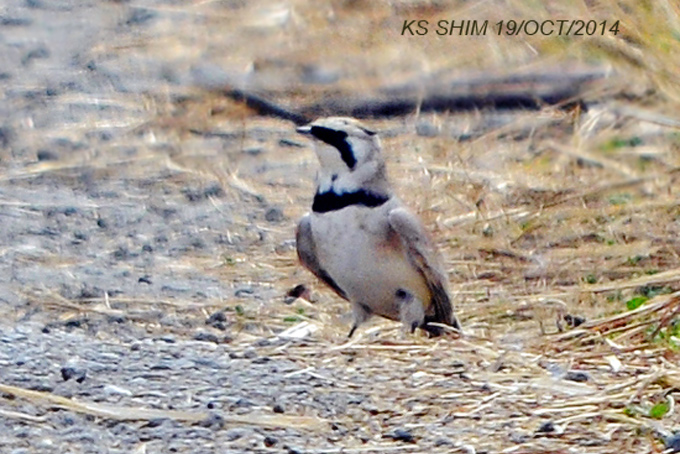
Mt. Gyeyang, Incheon, October 18
From my mountain watchpoint (which commands an excellent, almost 360-degree view for at least 20km in all directions), still a trickle of raptor migration evident. Over the course of two and a half hours around midday, five Japanese Lesser Sparrowhawk formed a spiralling mini-kettle, two of them stooping and tumbling briefly; one Amur Falcon hurried through, and six Eastern Buzzard lazed on thermals over the ricefields.
Descending through the trees I bumped into the resident gang of Azure-winged Magpies.
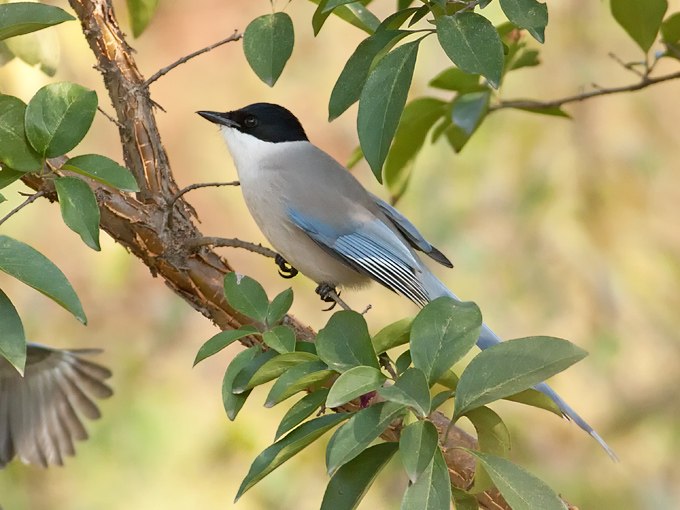

Mt. Gyeyang, Incheon, October 11
During a non-birding hike up Incheons highest peak (395m), I was suddenly surprised by the overhead rush of 15 Amur Falcon, deftly catching airborne insects with their spectacular flight. This movement of migrants continued for about 40 minutes, and included 10 Red-rumped Swallow, four Eastern Buzzard, and 12 Brambling.
Of most interest on the wooded and grassy slopes, two Siberian Thrush, four Yellow-browed Warbler, two Olive-backed Pipit, two Azure-winged Magpie and a Black-faced Bunting.
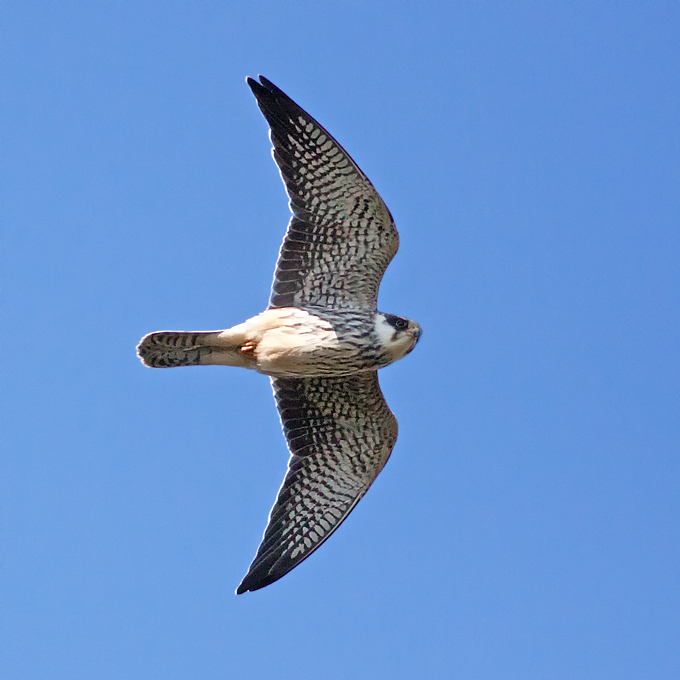
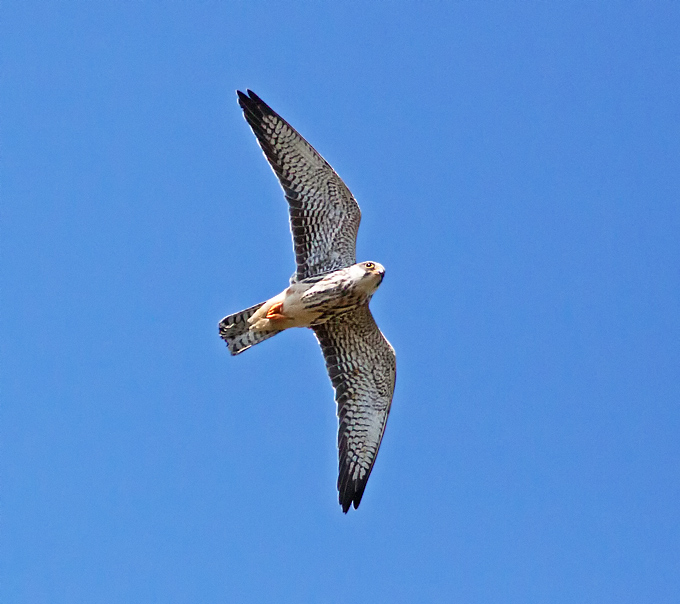
Dobongsan, Seoul, October 4
A morning at the mountain yielded 3 or 4 calling Yellow-browed Warblers, 2 Eurasian Nuthatches, calling Eurasian Jays, scattered Marsh and Great Tits, a male Mugimaki Flycatcher high in a tree, a Rufous-tailed Robin much lower, 2 Asian Stubtails, a pair of Tristram’s Buntings, a single Yellow-throated Bunting, and 1 calling Japanese Pygmy and 4 White-backed Woodpeckers, the last an apparent family unit.
Mokpo Namhang Urban Wetland, October 4
Compared to three days earlier birds were almost the same; only Eastern Spot-billed Duck were now over 20 and two Common Redshank were seen additionally.
The Black-winged Stilts are still on the site and this morning at very close range.
Images of all four individuals:

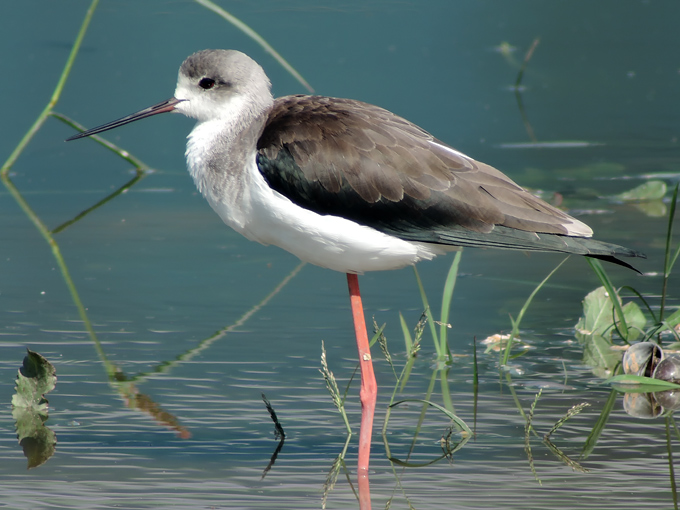

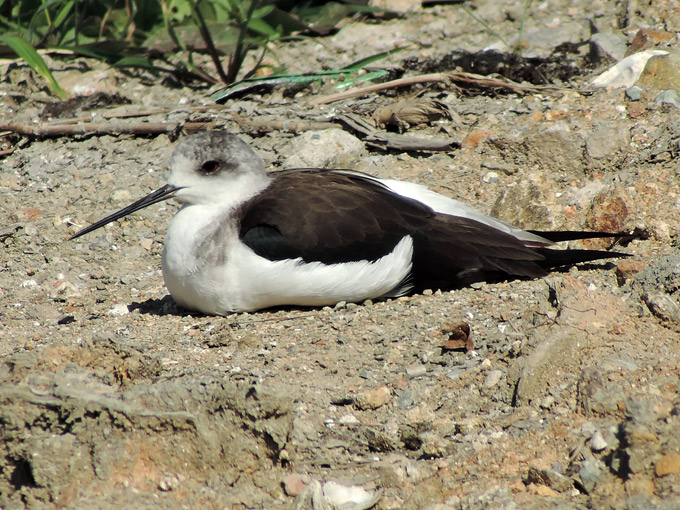
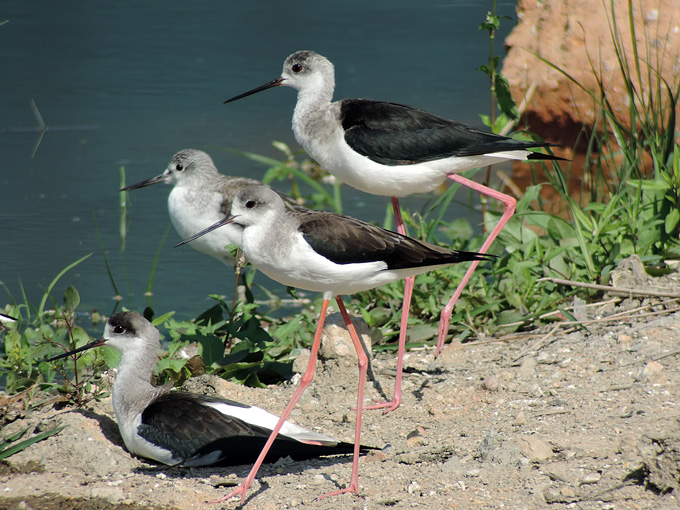
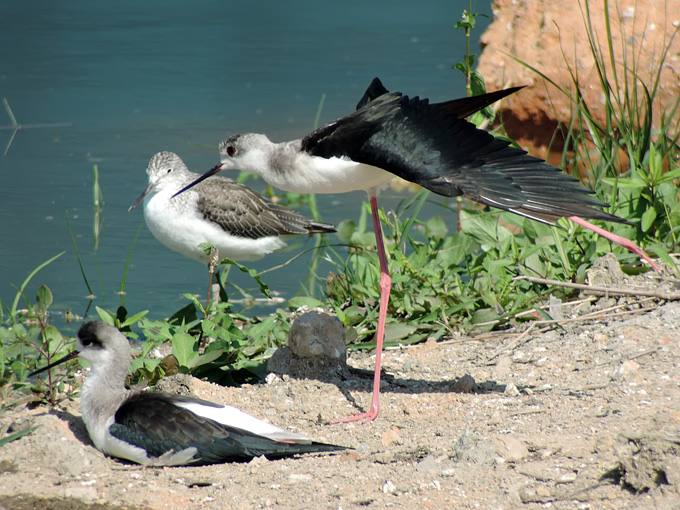

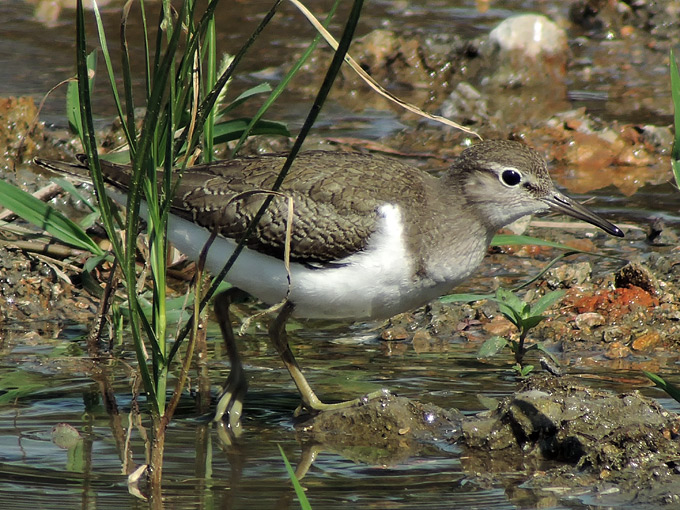
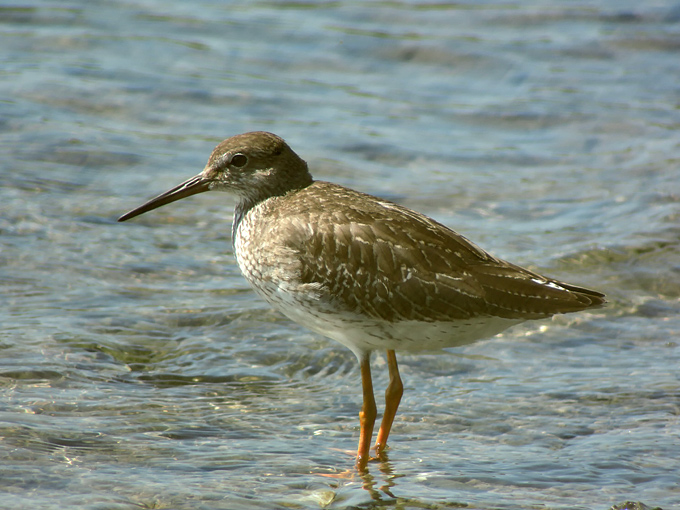
Junam Reservoir, October 3
With a few hours free this afternoon I decided to have a quick walk at Junam Reservoir. It was clear and sunny, almost a perfect day. At my first stop, it was nice to see a small flock of Bean Geese (8) flying overhead. There weren’t many birds on the main lake, but still there were a few surprises including (6) Pheasant-tailed Jacana. I was only able to view them from a distance, but none were in breeding plumage, and I’ve read that juveniles resemble adults in non-breeding/winter plumage. They were feeding on some floating vegetation. The birds that I looked carefully at lacked yellow on the sides of the neck sides. Other birds on the main lake include Little Grebe (8), Common Pochard (19), Tufted Duck (3), Gadwall (10), and Falcated Duck (2). At Dongpan, there were about 700+ ducks, mostly Gadwall, with some Mallard, Eastern Spot-billed Duck, a few Northern Pintail, and a single Greater White-fronted Goose.
Mokpo Namhang Urban Wetland, October 1
A sunny afternoon invited for a visit at the site. Still a few shorebirds present: c. 50 Common Greenshank; one found without the tip of the bill, 3 Terek Sandpiper, a lonely Grey Plover and a lonely Grey-tailed Tattler, several Common Sandpiper, Long-billed Plover and Red-necked Stint. Also present for several days now 4 Black-winged Stilt.
Eight Eastern Spot-billed Duck, two Common Teal and one female Mandarin Duck were seen. Only three Little Egret, thirteen Great Egret and 63 Grey Heron were on the site along with one Common Kingfisher, one Grey Wagtail and at least seven White Wagtail.
Two bigger flocks of birds, one c. 40 Eurasian Magpie and the other c. 80 to 100 Eurasian Treesparrow moved around. Several Oriental Tutle Dove and Brown-eared Bulbul were also seen.
